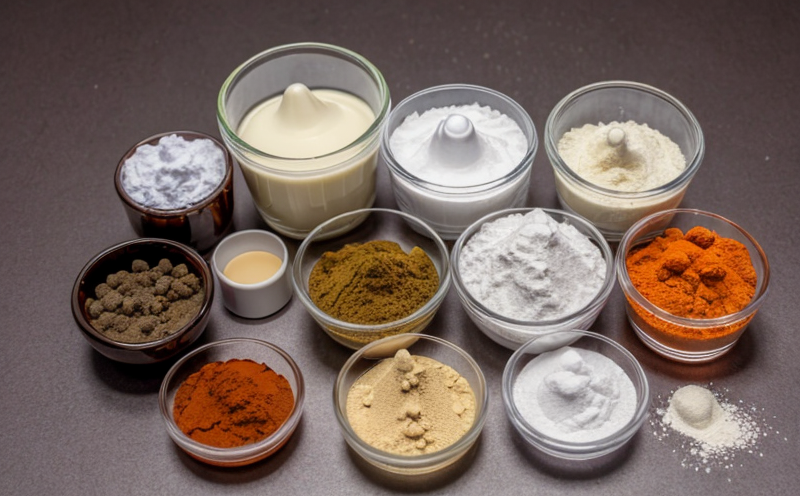Loss on Drying LOD Testing
The Loss on Drying (LOD) test is a critical analytical procedure used to determine the amount of water or volatile matter present in excipients and formulation ingredients. This method is essential for ensuring product quality, compliance with pharmaceutical regulations, and consistency throughout production processes.
In this testing process, samples are heated under controlled conditions until they reach a stable weight. The difference between the initial sample weight and the final dried weight provides an accurate measurement of the water or volatile matter content. This information is crucial for several reasons:
- To ensure that excipients do not contain excessive moisture which could lead to instability, microbial growth, or degradation.
- To verify adherence to specifications outlined in product development and quality control protocols.
- To maintain the stability of formulations by ensuring consistent ingredient properties across batches.
The LOD test is performed using precision analytical balances capable of measuring minute weight changes with high accuracy. The samples are typically heated at a specified temperature, often between 105°C to 120°C, depending on the excipient or ingredient being tested. This heating time can vary from 3 hours to overnight, ensuring complete drying.
Sample preparation involves accurately weighing the sample into pre-weighed containers. The samples are then dried in an oven maintained at the specified temperature until constant weight is achieved. Once dry, the samples are cooled and reweighed to calculate the percentage loss of water or volatile matter. The LOD test typically yields a result expressed as a percentage of moisture content.
The accuracy and precision of the LOD test depend heavily on several factors including sample preparation, oven temperature control, heating time, and balance sensitivity. Proper technique is crucial to minimize errors and ensure reliable results. This testing method supports critical decisions in pharmaceutical manufacturing and quality assurance processes.
Industry Applications
| Excipient Type | LOD Test Results Importance |
|---|---|
| Magnesium Stearate | Ensures lubricity and flow properties without excessive moisture. |
| Sodium Starch Glycolate | Aids in disintegration but must not contain water to prevent caking. |
| Sucrose | Maintains sweetness and bulk density; LOD helps control hygroscopicity. |
| Citric Acid | Provides tartness and buffering capacity, ensuring accurate moisture content. |
| Polyethylene Glycol (PEG) | Avoids degradation due to moisture, maintaining viscosity consistency in formulations. |
| Sodium Chloride | Ensures saltiness without affecting the overall water content of the formulation. |
The LOD test plays a pivotal role across various excipients and formulation ingredients. It is particularly important for those that can be affected by moisture, such as magnesium stearate or sodium starch glycolate, where excessive moisture can lead to instability. For sucrose, the test ensures sweetness without compromising bulk density. In citric acid, it helps maintain its buffering capacity accurately, while in PEG and sodium chloride, it prevents degradation due to moisture.
By performing LOD tests, pharmaceutical companies ensure that their excipients meet stringent quality standards, thus enhancing product stability and safety. This testing method is essential for compliance with international standards such as ISO 17892-4:2015, which provides detailed guidelines on the procedure for determining loss on drying.
Quality and Reliability Assurance
The LOD test contributes significantly to quality and reliability assurance in pharmaceutical testing. By accurately measuring moisture content, this method ensures that excipients and formulation ingredients are free from excessive water or volatile matter. This is critical for maintaining product stability and ensuring consistent performance across different batches.
For instance, if a batch of magnesium stearate contains more moisture than specified, it may not perform as expected in the manufacturing process, potentially leading to lubrication failures. Similarly, sodium starch glycolate with high water content can cake or become unstable, affecting its intended use in formulations.
The LOD test is also pivotal for compliance with regulatory standards such as those set by the United States Pharmacopeia (USP), European Pharmacopoeia (EP), and International Conference on Harmonisation of Technical Requirements for Registration of Pharmaceuticals for Human Use (ICH). These organizations emphasize the importance of accurate moisture content measurement to ensure product safety and efficacy.
Regular LOD testing helps identify potential issues early in the production process, allowing for corrective actions to be taken promptly. This proactive approach ensures that only high-quality excipients reach the manufacturing stage, thereby enhancing overall product quality and reliability.
Competitive Advantage and Market Impact
The LOD test offers a competitive advantage by ensuring consistent product quality across all batches produced. In an increasingly regulated pharmaceutical market, compliance with international standards is crucial for maintaining a strong market presence. By accurately measuring moisture content using the LOD test, companies can demonstrate their commitment to quality and reliability.
Consistent performance of excipients in manufacturing processes translates into products that are more reliable and effective. This consistency not only enhances product quality but also builds customer trust and loyalty. In a highly competitive market, such factors can be decisive for gaining and retaining market share.
The LOD test also plays a role in reducing production costs by minimizing waste and improving efficiency. By ensuring that excipients meet the specified moisture content, companies can avoid costly rejections or recalls due to quality issues. This not only saves on immediate expenses but also helps maintain a positive brand image, which is crucial for long-term success.
In conclusion, the LOD test contributes significantly to competitive advantage and market impact by ensuring consistent product quality, regulatory compliance, and reduced production costs. These factors are essential in maintaining a strong market position and achieving long-term success in the pharmaceutical industry.





